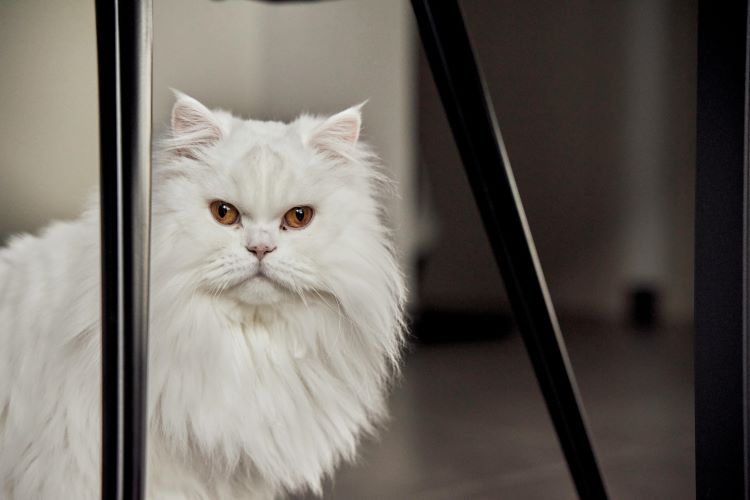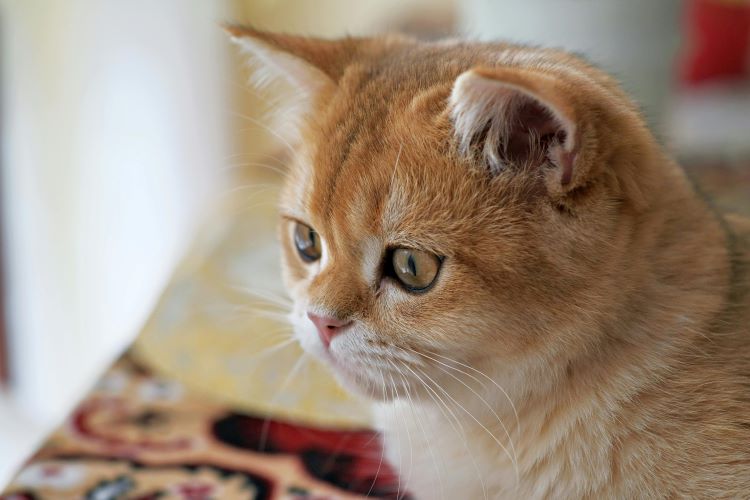Ready to help treat your pet to a healthy life?
Brachycephalic Cat Breeds: the Health Risks of Flat Faces
By : Kathleen Crampton & Trupanion Staff | Published Jul 22, 2025

Cats with smushed faces, known as brachycephalic cat breeds, are as cute as can be, with their pincushion noses and chubby cheeks. But with a shortened head and flat face, some potential health issues may arise.
To make sure that these felines are taken care of, it’s helpful to understand what exactly brachycephaly is and how it affects cats. Learn more about the health risks, specific breeds with flat faces, and care tips — so that you can give your furry companion a long, happy life.
What is brachycephaly in cats?
Brachycephaly literally means short- or broad-headed and is used to describe shortened heads in several species. There are brachycephalic dogs and even humans!
Cats with brachycephaly have short skulls, where the bones in the face specifically are shorter than those in other cats. This creates a pushed-in look, with a shortened nose, flat face, round head, and bulging eyes. Not all brachycephalic cats will display all of these features, and some will have them in varying degrees.
Cats with smushed faces have been desirable for a very long time, with some cat breeds dating back hundreds of years. These cute kitties with their angelic, round faces are selectively bred to continue producing the flat-faced traits: both for popular demand and to align with professional breed standards.
Health risks in flat-faced felines
Brachycephalic cat breeds are predisposed to certain health issues due to the structure of their head, which create some abnormalities in the components of their face. Not all cats with flat faces will develop these conditions, or some may have varying degrees of severity, but it’s important to be aware of the health risks nonetheless.
- Brachycephalic airway syndrome (BAS) — Shortened noses, narrow nostrils, and an elongated soft palate contribute to BAS, a condition that can make it difficult for these cats to breathe normally. The clearest signs of BAS are mouth breathing and snoring, but pet parents may also notice that their affected cat gets exhausted more easily in the heat or with physical exertion.
- Dental issues — Skull abnormalities may mean that the same amount of teeth that a non-brachycephalic cat has are crammed into a smaller space for a flat-faced cat. With misaligned teeth and a potential underbite, these kitties may not be able to chew or bite correctly, which may risk the development of gum disease or other dental issues.
- Overheating — Cats cool down by grooming or seeking cool surfaces, though they may also pant in extreme heat. If they can’t get enough oxygen through their mouth and nose, they may not be able to cool down properly.
- Eye issues — Those big, soulful eyes come with flat-faced cat breed health risks. Protruding eyes can make it harder to close the lid, sometimes leading to dry or irritated eyes. And shorter tear ducts can cause teary eyes.
- Skin conditions — Brachycephalic cats can have extra folds of skin around the face, predisposing them to skin irritation or infections.

7 brachycephalic cat breeds
Brachycephaly in cats may not be instantly recognizable — some kitties might have more extreme flat faces and others may be less pronounced. But the common characteristics remain: flat, round face and nose and sometimes bulging eyes and an underbite.
The following are some of the more distinctive brachycephalic cat breeds, including their key characteristics, personality, and known health risks.
1. Persian
The Persian is one of the most popular cat breeds, according to registration data from The Cat Fanciers’ Association. It is also one of the most well-known cats with a brachycephalic head shape. These lovable kitties are known for their elegant look, with long, luscious fur; a rounded face; and smushed, upturned nose and mouth. Pet parents adore their calm, affectionate personalities. In addition to health risks shared among flat-faced cat breeds, Persians are also prone to polycystic kidney disease.
2. Scottish Fold
The rounded, plush face of the Scottish Fold makes this cat breed very recognizable. Their large, soulful eyes paired with folded-down ears creates an owl-like look that’s hard not to love — plus, their low energy and friendly temperaments are conducive to many household settings. Scottish Fold ears have either a single, double, or triple fold, and because they’re more prone to infection than straight cat ears, it’s crucial for pet parents to routinely check for signs of infection.
3. Himalayan
Himalayans are a mix of a Persian and Siamese cat. While the Siamese is not brachycephalic, the Himalayan’s hallmark features are more similar to the Persian, with the key difference being their colored tips (ears, paws, and tail). Some organizations classify the Himalayan as its own breed, while others consider it a type of Persian. Regardless of their classification, Himalayans are known to be gentle, calm pets who can go on to live long lives with proper care.
4. Exotic Shorthair and Longhair
Two other cats that are also related to the Persian breed group are the Exotic Shorthair and Longhair, both of which are considered to have a slight degree of brachycephaly. The Exotic Shorthair shares many of the same facial features and body structure as the Persian, but their coat is plush and short. The Exotic Longhair meanwhile looks very similar to the Persian but has a more diverse lineage, so it can’t be considered a Persian. Whether short or long fur, Exotics are some of the lazier cat breeds, preferring a nap in the sun over romping around the house.
5. British Shorthair and Longhair
The British Shorthair and Longhair display short, chubby faces, with mouth shapes that look like they’re always smiling. Blue coats are the most common among this brachycephalic cat breed, which, paired with their typical golden or copper eyes, makes for a striking feline. Both British Shorthairs and Longhairs are affectionate but tend to not be as cuddly as other cats.
6. Selkirk Rex
Selkirk Rex is one of the new cats on the block; its origin story began in the late 1980s. Since then, Selkirk Rex has become recognized as a registered breed but is still quite rare. Considered a moderately brachycephalic cat, the Selkirk Rex is like a big, cuddly teddybear, with curly locks and even curly whiskers. They love to interact with their family and aren’t afraid to show off their silly side. Common health issues to look out for with the Selkirk Rex are hypertrophic cardiomyopathy, polycystic kidney disease, and hip dysplasia.
7. Burmese
Often called the “Velcro cat,” the Burmese will stick by their family members’ sides, not only because they’re social little creatures but also because they tend to be possessive over their loved ones. These cats are typically found with blue, champagne, and dark brown/black coats. Burmese cats have less severe brachycephaly, so their faces aren’t quite as smushed as, say, the Persian. This breed is predisposed to some health issues, like hypokalemic polymyopathy, diabetes, and feline orofacial pain syndrome.
It’s worth noting that some do not consider Burmese as true brachycephalic cats because their skulls are not as compressed, and they tend not to suffer the same respiratory issues. However, there are still a lot of similarities to other flat-faced cat breeds and are still commonly associated with brachycephaly, whether or not they meet all the criteria.

Care tips for brachycephalic cats
Learning more about the flat-faced cat health risks might make some people hesitant to welcome these cats into their families, but just because the risks exist doesn’t mean that your cat will have them. And if they do, the condition might not be severe.
These smushed-face felines can live long, happy, and healthy lives with dedicated care from their pet parents. Here are some tips for keeping your cat in tip-top shape.
Implement routine at-home grooming
Routine grooming is important for all pets, but especially so for brachycephalic cat breeds. When brushing or combing their fur, check the skin folds around their face and mouth for signs of irritation or infection. Take note of any eye discharge or other irritation. And don’t forget to brush their teeth regularly to ensure that their gums stay healthy. If your cat is like a lot of their fellow felines though and doesn’t tolerate at-home brushing, you can schedule professional cleanings with your veterinarian.
Additionally, pay attention to your cat’s body language, looking for any signs of discomfort or BAS. Any signs like mouth breathing, wheezing, snoring, or getting tiring easily after playtime can all indicate respiratory issues and should be a sign to give your vet a call.
Speaking of your veterinarian though…
Get regular vet checkups
The vet you choose should be well-versed in brachycephaly in cats so that they can provide accurate diagnoses and treatment plans if necessary. In addition to regular checkups, reach out to the veterinarian if you notice any health issues with your cat to prevent a condition from worsening.
Avoid overexertion and overheating
Flat-faced cats shouldn’t be over-exercised and need stable temperatures to avoid overheating. Talk with your vet about how much exercise your cat needs. If it’s a hot day, turn on the air conditioning and keep your cat out of the sun.
Protect your cat with pet insurance
Have a flat-faced breed or considering one? Health insurance coverage for brachycephalic cats can help support your pet’s overall health and enable them to get crucial medical care. While a pet insurance policy doesn’t cover pre-existing conditions, it can help cover new, chronic issues and unexpected illness or injuries that mischievous felines might experience.
Learn more about protecting your furry companion’s health and your budget with cat insurance today.
